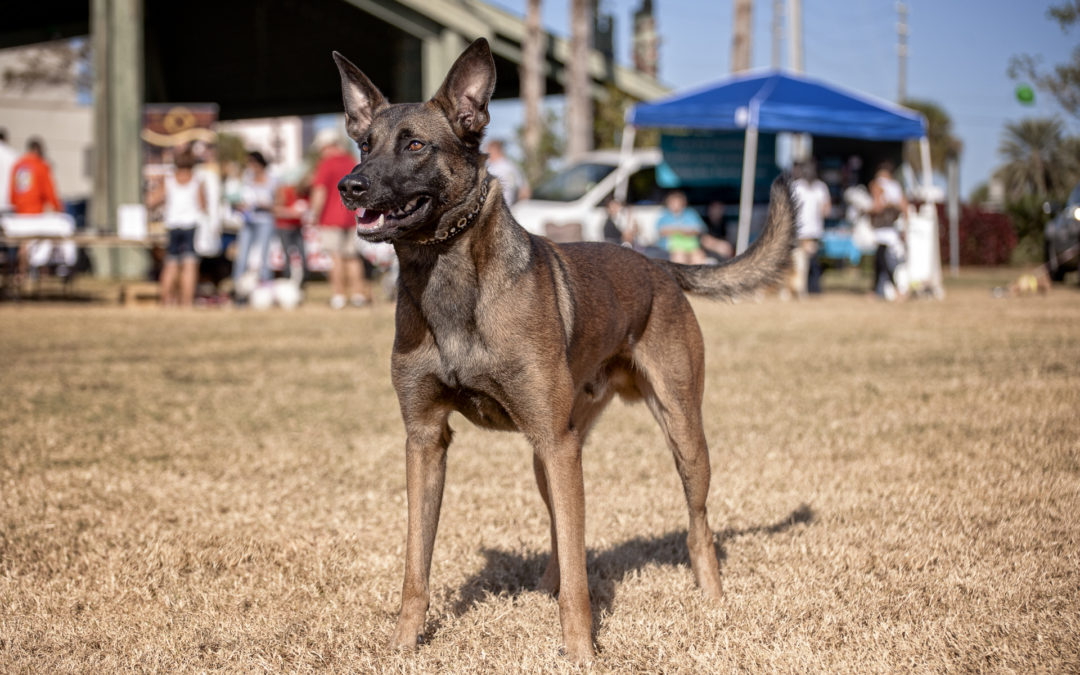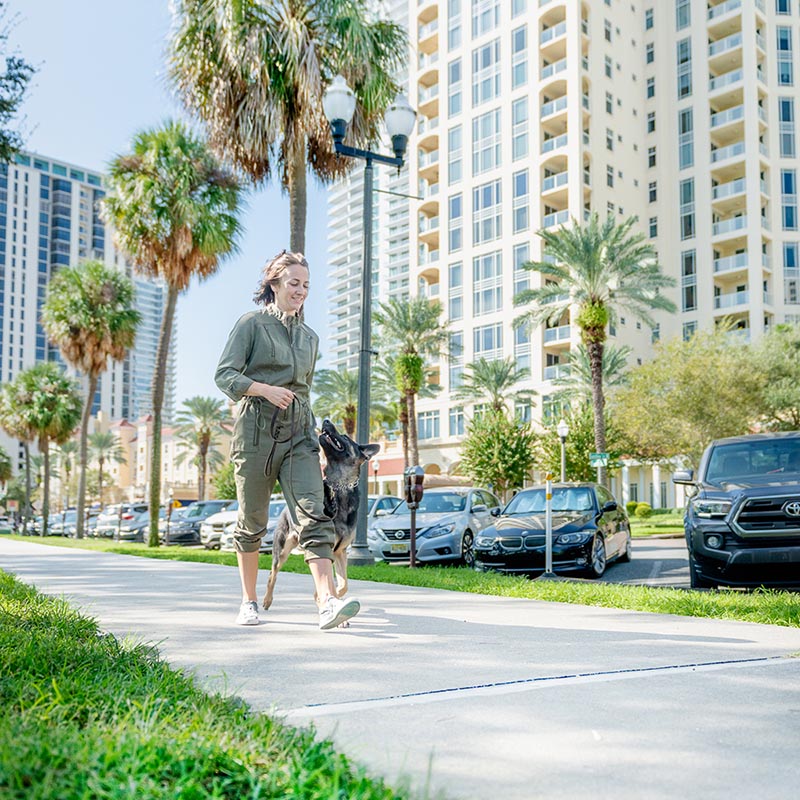To me, having a dog fully off-leash trained is more about the relationship you have with your dog than anything else. At the end of the day, it’s about your dog choosing you instead of other distractions. People don’t want to accept that this takes time, and it also takes a certain maturity level from your dog. Here are a few points to consider when setting your goals for off-leash training:
Trusting your dog is ready to be off-leash.
Dogs, like children, grow up and mature at different stages. Would you allow your 5-year-old child to cross into a major intersection without holding your hand? Most likely, you wouldn’t, so why then do we expect our dogs to have the same control without taking the time to lay out a proper foundation?
The truth is that the majority of my clients like to know that their dog is capable of being off their leash. Still, when they are honest with themselves, they are uncomfortable in those situations (especially when first getting their dog back from training.) You have to build trust within your obedience, and your dog needs to show you a certain level of maturity before you “test” anything. To me, testing a dog is setting them up to fail, and with the risk that comes along with off-leash control, it is not worth it to me. If you need to rely on your off-leash training tool, then, by all means, that is why it is there.
Should you use an off-leash electric collar?
At the training facility, we get phone calls every day from people asking for help, advice, and quick turnaround for off-leash training.
I first explain to all of my clients that to ensure their dog can be off-leash in a short amount of time, I will need to incorporate an “off-leash electric collar” into their training. As a dog trainer, an electric collar, when taught properly, is an invisible leash that ties you to your dog when in an uncontrolled environment. An uncontrolled environment is a place that does not have borders or fences. That could include your front yard, open parks, dog beaches, hikes. Anywhere your dog is completely free. I don’t use electric collars to teach obedience commands such as sit, down, stay, heel or place. My number one goal for overlaying an electric collar is to teach off-leash commands. You can’t expect to teach your dog what this collar means by experimenting. It simply must be taught. When I use an electric collar in training, my top priority is the safety of my dog. I want all of my clients to have 100% confidence in handling their dogs in all scenarios.
When I went to Utah for a national Mondio Ring competition with my dog, my Husband wanted to visit a free-range Bison park. I have a high-drive working dog with a herding breed, and there were herds of huge Bison. You bet I had my off-leash collar. At one point, all the Bison took off running, and literally, the earth shook. Genghis perked up, and I swore he was about to take off running, and if I didn’t have that collar on him, I probably would have had a heart attack! Luckily, I could relax and know that if worst-case scenario and he bolted and did not respond to the “Come” command, then I could have given him a correction (that he knows and understands). He would have immediately turned around and said, “Oops, sorry, mother nature really sparked my genetics, and I went back to my roots!” Then I would have praised him for coming and probably started throwing a frisbee with him. But, none of that happened, and instead, my family got to enjoy an awesome picnic and hike at the park! Even with Genghis being a national-level competition dog with years of training, safety was my priority.
Leash laws are enforced in most dog-friendly towns.
Just because your dog is well-mannered off-leash doesn’t mean other dogs or people feel comfortable with your dog. An example is when I am playing off-leash frisbee, and I see another person walking their dog. Out of respect, I will put my dog back on the leash. The worst thing is to be out with your dog and have a dog you don’t know run up on you or your dog.
In the Tampa Bay area, there are a ton of places you can take your dogs. There are even restaurants that have dog menus! There have to be mandated leash laws mainly for the safety of everybody. Be respectful and manage your dog accordingly. You are the only person who truly knows your dog, and giving a false perception that your dog is highly trained just because they are off-leash is not fair to other people and their dogs. I believe that having a loose leash in public is important, and your dog should not be pulling you all over the place. Teaching a nice walk or heel command is completely sufficient.
I have different videos of different breeds of dogs doing off-leash training in very high-distraction areas. These videos serve mainly to display the dog’s level of performance, their capabilities, and the same with their trainer. These dogs have had hundreds of hours of training. Even with that being said, they are still dogs. They can get spooked by a loud noise. They can see a squirrel or cat in the distance, and there is still an element of risk with being off-leash. I trust my handling skills and that if there were ever a situation, I would manage it accordingly, and honestly, after the short video clip, I put them right back on the leash, and we enjoy our time downtown!
As dog owners, all we want is the best performance from our pets. It is not bad to have such high expectations as long as it is not to the detriment of what they are capable of.
Having realistic expectations is very important. If you have a picture in your mind of your dog following your child to the bus stop and waiting for him all day, that is not realistic! Instead, having a dog that clearly understands the boundaries of your property or not to run out the door is very reasonable. This can all be taught with repetition, time, and consistency. You don’t need any magic collars (or even leashes), for that matter. You have everything you need by first starting with a strong relationship with your dog—a foundation based on leadership, mutual respect, and creating rules/boundaries. Let your dog mature and organically build trust so that when the day comes that you want to enjoy your dog’s obedience off-leash, you can have the utmost confidence doing so. This is not a process to be rushed and should not be the end-all goal for your dog’s training accomplishments!



